Data center monitoring tools play a vital role in ensuring the efficient operation of data center infrastructure. By providing real-time monitoring, alerts, and comprehensive reporting capabilities, these tools enable organizations to proactively manage and troubleshoot their network switches, routers, servers, and other devices.
With features such as threshold-based monitoring and customizable dashboards, these tools offer a holistic view of the data center, allowing for optimized resource utilization and quick issue resolution.
In this discussion, we will explore the various aspects of data center monitoring tools, including their importance, key features, and the benefits they bring to organizations. So, let's dive into the world of data center monitoring and discover how these tools can revolutionize the way we manage and maintain our data center infrastructure.
Key Takeaways
- Data center monitoring tools provide real-time monitoring and alerts for switches and routers, ensuring prompt issue detection and resolution.
- Connectivity monitoring covers both physical and virtual servers, offering a holistic view of the network infrastructure.
- Real-time threshold-based monitoring allows for immediate notification when metrics exceed or fall below predefined levels, enabling quick response to potential issues.
- Threshold-based alerts are crucial for maintaining optimal performance and proactive issue resolution in data center operations.
Connectivity Monitoring for Switches and Routers
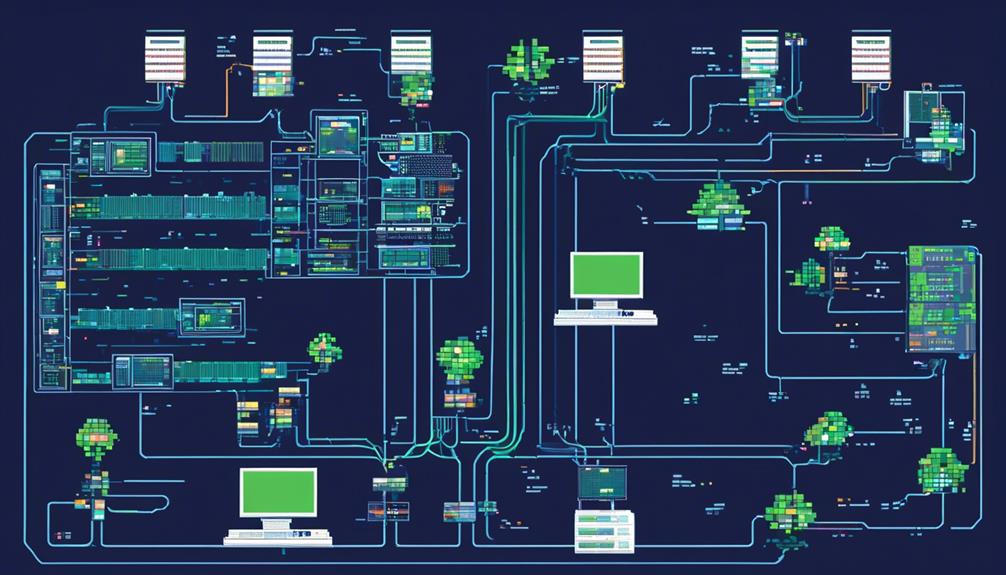
Connectivity monitoring for switches and routers is a crucial aspect of network management, ensuring real-time monitoring, alerts, and customizable performance thresholds to maintain uninterrupted network functionality. In today's data center environments, where network infrastructure plays a critical role, it becomes imperative to have robust connectivity monitoring solutions in place. One such solution is OpManager, which provides comprehensive connectivity monitoring for switches and routers.
OpManager offers real-time alerts and customizable monitors using SNMP/WMI protocols. This allows network administrators to monitor the health and performance of switches and routers in real-time, ensuring any issues are detected and resolved promptly. By setting performance thresholds, administrators can receive alerts whenever these thresholds are breached, allowing for proactive troubleshooting and prevention of any connectivity issues that may arise.
The monitoring system provides detailed hardware metrics, including hardware status and alarms, which can be accessed from the web client. This ensures that the connectivity of switches and routers is closely monitored, enabling administrators to identify and address any potential issues before they impact network performance.
Furthermore, OpManager's connectivity monitoring and alerting system covers both physical and virtual servers. This holistic view of network connectivity and performance allows administrators to have a comprehensive understanding of the entire network infrastructure. By having a centralized monitoring solution, network administrators can efficiently manage their data center environments, ensuring uninterrupted connectivity and optimal performance.
Monitoring Critical Server Metrics
Monitoring critical server metrics is a fundamental aspect of server management, providing essential insights into the health, performance, and availability of servers in a data center environment. By tracking parameters such as CPU usage, memory utilization, disk I/O, network traffic, and uptime, organizations can proactively manage their server infrastructure and swiftly address any performance issues that arise.
Real-time monitoring of server metrics enables administrators to set thresholds and receive alerts when any metric exceeds the predefined limits. This proactive approach allows for timely identification and resolution of performance issues, reducing downtime and ensuring optimal server performance. For example, if CPU usage reaches a critical level, an alert can be triggered, indicating the need for additional resources or workload balancing.
Monitoring critical server metrics can be achieved using various protocols such as Simple Network Management Protocol (SNMP), Windows Management Instrumentation (WMI), or Command Line Interface (CLI). These protocols provide a comprehensive view of the server infrastructure, enabling administrators to monitor and analyze server performance metrics from a centralized management console.
The data collected from monitoring critical server metrics can be invaluable for capacity planning, resource optimization, and ensuring high availability of server resources. By analyzing historical performance data, organizations can identify trends, forecast future resource requirements, and make informed decisions regarding infrastructure upgrades or adjustments.
Real-Time Threshold-Based Monitoring

Real-time threshold-based monitoring is an essential aspect of data center management. By setting performance thresholds and receiving alerts based on those thresholds, organizations can ensure immediate notification when a monitored parameter exceeds or falls below predefined levels.
This proactive approach allows for quick response to potential issues, helping maintain optimal performance levels and minimizing potential downtimes in the data center environment.
Threshold-Based Alerts
Threshold-based alerts are an essential component of data center monitoring, aiding in the proactive identification and resolution of performance issues. Real-time threshold-based monitoring allows users to set performance thresholds for various metrics such as CPU usage, memory utilization, and network bandwidth. When a metric exceeds the defined threshold, administrators are promptly notified, enabling them to take immediate action to maintain optimal performance. These alerts are crucial for ensuring the smooth and efficient operation of data center infrastructure. By configuring thresholds and receiving real-time alerts, administrators can proactively address potential issues before they escalate, minimizing downtime and maximizing the availability of network devices. The table below illustrates the importance of threshold-based alerts in data center monitoring tools:
| Metric | Threshold | Alert Triggered? |
|---|---|---|
| CPU Usage | > 90% | Yes |
| Memory Utilization | > 80% | Yes |
| Network Bandwidth | > 95% | No |
| Disk Space | < 10% | No |
| Server Response Time | > 500ms | Yes |
In this example, an alert would be triggered for CPU usage, memory utilization, and server response time, indicating potential performance issues that require immediate attention.
Real-Time Monitoring Benefits
By leveraging the capabilities of real-time monitoring, data center administrators can proactively manage performance thresholds and swiftly address potential issues before they impact the overall efficiency and availability of the network infrastructure.
Real-time monitoring benefits include the ability to receive alerts when performance thresholds are breached, enabling timely action to prevent service deterioration. This type of monitoring allows administrators to set alerts for performance issues and receive notifications via email or SMS, ensuring prompt responses to potential problems.
Real-time monitoring also provides the capability to monitor hardware metrics from the web client, such as hardware status and alarms, ensuring timely awareness of any potential issues. Additionally, this monitoring approach enables the creation of custom monitors using SNMP or WMI, offering flexibility in monitoring specific data center components and services.
Hardware Metric Monitoring
Hardware metric monitoring plays a crucial role in data center management by providing real-time insights into the performance and health of network switches, routers, and security devices.
By tracking performance metrics and setting up real-time alerts, data center administrators can proactively address hardware-related issues and ensure optimal performance.
This level of monitoring allows for timely actions to be taken, minimizing downtime and maximizing efficiency in the data center environment.
Performance Monitoring
Performance monitoring, also known as hardware metric monitoring, is a crucial aspect of ensuring the health and efficiency of network switches, routers, and security devices in a data center. By tracking hardware metrics, data center administrators can proactively identify and address issues that could impact the overall performance of the infrastructure.
A reliable data center monitoring solution provides real-time monitoring and alerts for switches, routers, and physical and virtual servers. It utilizes protocols such as SNMP, WMI, and CLI to gather performance data and set up custom monitors with threshold-based monitoring and alerts. Administrators can access hardware status and alarms through a web client, while dashboards offer comprehensive monitoring and customization options. Detailed reports provide insights into the overall performance of the data center, helping administrators optimize resource allocation and identify areas for improvement. With performance monitoring, data center administrators can ensure the smooth operation of their infrastructure and maintain optimal data center performance.
| Key Features | Benefits |
|---|---|
| Real-time monitoring and alerts | Prompt identification of issues |
| Custom monitors with threshold-based monitoring | Proactive problem resolution |
| Comprehensive dashboards and reports | Insights into data center performance |
Real-Time Alerts
To ensure the ongoing health and efficiency of network switches, routers, and security devices in a data center, real-time alerts for hardware metrics play a vital role in promptly identifying performance issues and potential failures. These alerts are a crucial component of data center monitoring tools and enable immediate notification of any deviations from predefined performance thresholds.
By using monitoring software that supports real-time alerts, data center administrators can proactively address hardware metric anomalies and prevent any adverse impact on the overall system. These alerts can be customized to align with specific data center requirements and configurations, using protocols like SNMP or WMI.
Real-time alerts provide actionable insights and visibility into the status and health of critical data center hardware, allowing for prompt issue resolution and maintenance.
All-In-One Data Center Monitoring Dashboards
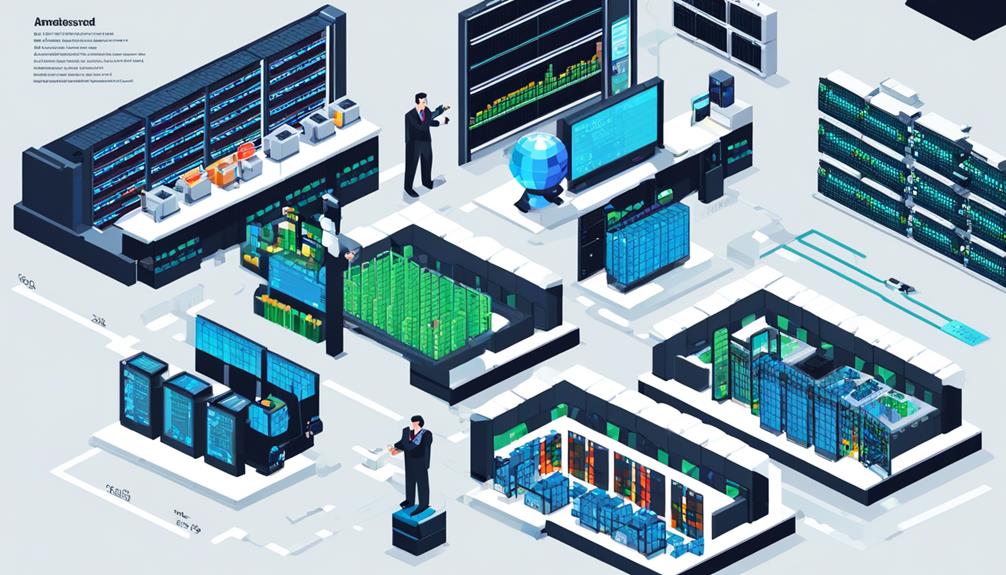
All-in-one data center monitoring dashboards provide comprehensive real-time monitoring and alerting for network paths, switches, routers, and security devices, offering a versatile solution for comprehensive data center monitoring. These dashboards are equipped with customizable monitoring capabilities for both physical and virtual servers, utilizing protocols like SNMP, WMI, and CLI. This allows users to set up custom monitors using SNMP or WMI, ensuring that all monitoring needs are met.
One of the key features of these dashboards is real-time threshold-based monitoring. This feature enables users to set performance thresholds and receive alerts for hardware metrics and alarms. By setting these thresholds, data center administrators can proactively identify and address any potential performance issues before they impact the overall operations of the data center.
In addition to real-time monitoring, these dashboards also provide 3D views for visualizing the data center infrastructure. This visualization allows administrators to gain a better understanding of the overall layout and connectivity within the data center. Furthermore, detailed reports are available to provide insights into the overall performance of the data center, allowing for informed decision-making and optimization of resources.
To cater to the diverse monitoring needs of data centers, add-ons are available for monitoring other critical devices within the data center environment. This includes power distribution units (PDUs), environmental sensors, and UPS systems, among others. By incorporating these add-ons, data center administrators can ensure that all aspects of the data center are monitored and any issues are promptly addressed.
Visualizing Data Center Infrastructure With Racks and 3D Views
Visualizing data center infrastructure with racks and 3D views provides a comprehensive and intuitive way to understand the layout and organization of equipment within the data center, enhancing monitoring and management capabilities. By incorporating 3D views into data center monitoring tools, it becomes possible to obtain a real-time visualization of the physical placement and status of servers, switches, and other hardware. This spatial understanding of the data center allows for efficient monitoring and management, as potential issues such as cooling inefficiencies and cabling problems can be easily identified and addressed.
The use of 3D views in data center monitoring tools also enhances the ability to plan for capacity and optimize resource utilization. With a visual representation of the infrastructure, administrators can identify areas of overutilization or underutilization, enabling them to allocate resources more effectively. Troubleshooting processes are also streamlined, as the spatial understanding provided by 3D views allows for quick identification of the location of any issues or failures.
Generating Detailed Reports for Overall Performance Analysis
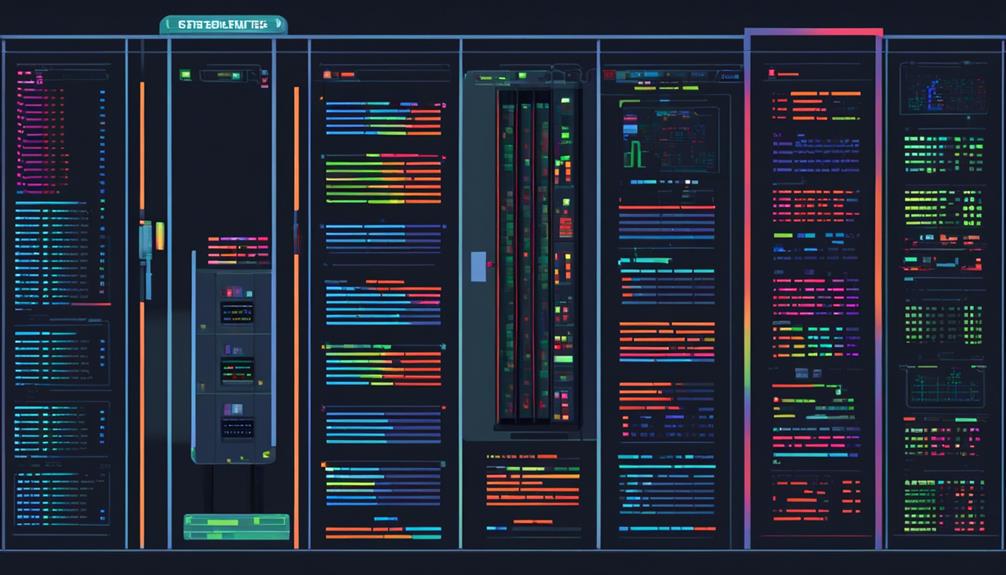
OpManager's comprehensive monitoring capabilities extend to generating detailed reports that provide a comprehensive analysis of the overall performance of the data center infrastructure. These reports cover various aspects of performance, including availability, response time, packet loss, and inventory of data center devices. By offering insights into these critical metrics, OpManager enables administrators to gain a holistic understanding of the data center's performance.
OpManager's reporting feature allows users to view historical data based on device groups or business views, facilitating a comprehensive analysis of the data center's performance over time. This capability is particularly useful for identifying trends, patterns, and potential bottlenecks in the infrastructure. Administrators can easily identify areas that require improvement and make informed decisions to optimize data center resources.
Another notable feature of OpManager's reporting capability is the ability to schedule reports and send them to chosen recipients. This feature ensures that stakeholders have access to up-to-date information on the performance of the data center. Additionally, the reports can be customized to meet specific requirements, providing a comprehensive overview of the data center's performance.
OpManager's monitoring capabilities extend beyond performance analysis to include firewall log management, network flow analysis, applications management, and network configuration management and monitoring. This comprehensive suite of tools allows administrators to effectively manage and monitor all aspects of the data center's infrastructure.
Monitoring Other Critical Devices in the Data Center
Monitoring Other Critical Devices in the Data Center is essential for ensuring their uptime and maintaining overall data center efficiency.
This includes monitoring hardware metrics, such as status and alarms, from web clients and setting up custom monitors using SNMP or WMI for devices beyond servers and network infrastructure.
Additionally, monitoring power consumption is crucial to optimize energy usage and identify potential issues.
Device Monitoring Essentials
Device monitoring is a crucial aspect of ensuring the optimal functioning and performance of critical devices within the data center. To effectively monitor other critical devices in the data center, it is essential to have the right tools and strategies in place.
Here are three essential device monitoring essentials for addressing data center issues:
- Real-time monitoring and alerts: Data center monitoring tools like OpManager provide real-time monitoring and alerts for switches, routers, and critical hardware devices. This allows for immediate detection of any issues or anomalies, enabling prompt action to be taken.
- Customizable monitoring protocols: Device monitoring can be customized using SNMP/WMI/CLI protocols to suit the specific needs of the data center. This flexibility allows for comprehensive monitoring of a wide range of devices and ensures that no critical device goes unnoticed.
- Threshold-based monitoring and reporting: Real-time threshold-based monitoring allows for setting performance thresholds and receiving alerts for critical devices. Detailed reports and visualizations are available to provide insights into the performance and health of critical devices in the data center, facilitating proactive troubleshooting and maintenance.
Ensuring Critical Device Uptime
To ensure uninterrupted operation of critical devices within the data center, consistent monitoring of network switches, routers, and security devices for health and performance is imperative.
Data center management requires proactive measures to identify and address performance issues before they lead to downtime. Real-time monitoring and alerting solutions like OpManager enable organizations to monitor switches and routers, ensuring that any potential problems are detected and resolved promptly.
Additionally, physical and virtual servers can be monitored using SNMP, WMI, or CLI protocols, allowing for the setup of custom monitors to track specific metrics.
By implementing real-time threshold-based monitoring, performance thresholds can be set, and alerts can be received for critical devices, providing the necessary insights to prevent downtime and mitigate any potential disruptions.
Effective monitoring tools are essential for maintaining the uptime and performance of critical devices in the data center.
Monitoring Power Consumption
Efficient utilization of energy resources within the data center requires comprehensive oversight of critical devices, including power consumption monitoring. By tracking power consumption, potential issues or inefficiencies can be identified and addressed promptly. This allows data center operators to make informed decisions about energy usage and implement strategies for cost savings and sustainability.
Monitoring other critical devices such as UPS, PDU, and HVAC systems alongside power consumption ensures comprehensive oversight of data center infrastructure. Real-time alerts and notifications for power consumption abnormalities help in proactive problem resolution and prevention of downtime.
Incorporating data center monitoring tools for power consumption monitoring provides the necessary visibility and control to optimize energy efficiency, reduce operational costs, and enhance the overall reliability of the data center.
Customer Reviews of Data Center Monitoring Tools
OpManager, a highly regarded data center monitoring product, has received positive customer reviews for its comprehensive features and ease of use. Customers have praised OpManager for its ability to provide real-time monitoring, alerts, and visualization capabilities, allowing them to identify and resolve performance bottlenecks effectively.
One of the key reasons why OpManager has received favorable reviews is its comprehensive set of features. The product offers reports on the performance, availability, response time, packet loss, and inventory of data center devices. This comprehensive monitoring capability allows customers to have a holistic view of their data center infrastructure, enabling them to make informed decisions and optimize resource allocation.
OpManager's ease of use is another aspect that customers have appreciated. The intuitive user interface and simplified workflows make it easy for users to navigate and configure the monitoring tool. This user-friendly approach reduces the learning curve and enables organizations to quickly adopt and leverage OpManager's capabilities.
Furthermore, OpManager's recognition as a Gartner NPMD Magic Quadrant entrant further validates its value as a data center monitoring tool. This recognition is a testament to OpManager's industry-leading capabilities and its ability to meet the needs of organizations in monitoring their data center infrastructure effectively.
Overall, OpManager's positive customer reviews highlight its value as a data center monitoring tool. Its comprehensive features, ease of use, and industry recognition make it a contextually relevant choice for organizations seeking to monitor and optimize their data center environments.
In the next article section, we will explore the criteria for selecting data center monitoring tools, including considerations such as hardware monitoring, network traffic throughput, performance alerts, and root cause analysis.
Case Studies Showcasing the Benefits of Opmanager
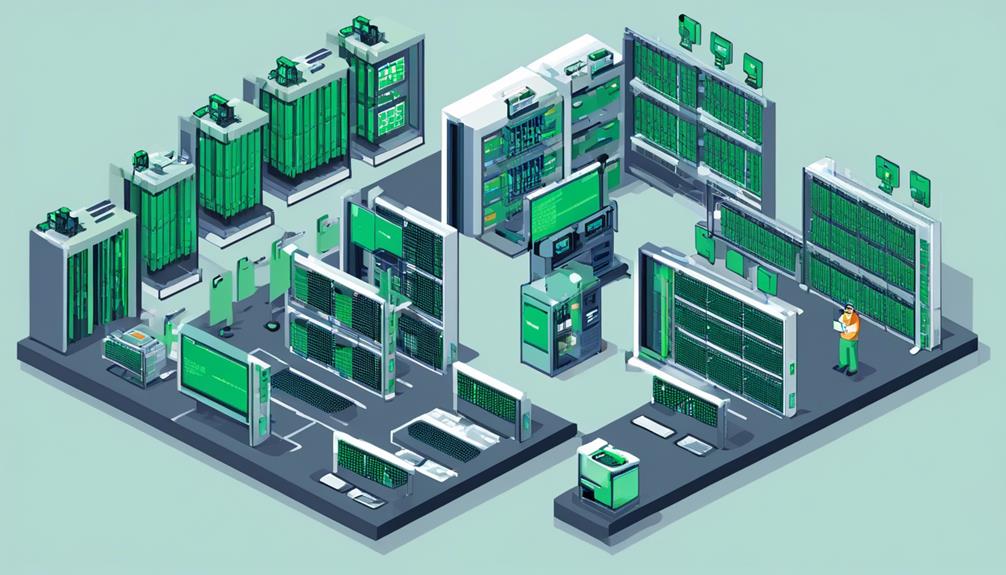
OpManager's tangible benefits and success stories in diverse industries make it a compelling choice for organizations seeking to optimize their data center environments. Several case studies highlight the significant advantages of using OpManager as a data center monitoring tool. Here are three examples that showcase the benefits of OpManager:
- Proactive Maintenance and Issue Resolution: OpManager's real-time monitoring and alerts for switches and routers enable proactive maintenance and timely issue resolution. By detecting and addressing potential issues before they escalate, organizations can minimize downtime, improve performance, and enhance overall operational efficiency.
- Cost Savings and Improvements: Hinduja Global Solutions, a leading business process management company, experienced substantial cost savings and improvements by leveraging OpManager. The tool enabled them to identify and resolve network performance bottlenecks, resulting in increased productivity and reduced operational costs.
- Enhanced Patient Care in Healthcare: A USA-based healthcare organization implemented OpManager to monitor their data center infrastructure. The organization witnessed improved network visibility, enabling them to deliver enhanced patient care. OpManager's monitoring capabilities allowed for proactive management of critical healthcare systems, ensuring uninterrupted access to patient records and enabling timely delivery of healthcare services.
OpManager's ease of implementation, feature-rich capabilities, and continuous innovation have earned it recognition in the industry. As a Gartner NPMD Magic Quadrant entrant, OpManager is trusted by organizations of various sizes across different sectors. Its comprehensive reports and monitoring capabilities provide valuable insights into data center device performance, historical data, and scheduled reporting, empowering organizations to make informed decisions and optimize their data center environments.
Review and Comparison of the Best Data Center Monitoring Tools
When reviewing and comparing the best data center monitoring tools, it is important to consider their features, performance monitoring capabilities, scalability, and flexibility. These factors play a crucial role in determining the effectiveness and suitability of the tools for different data center environments.
Features Comparison
In this review and comparison of the best data center monitoring tools, we will analyze the features offered by leading providers in the industry.
Here are three key features to consider when evaluating data center monitoring tools:
- Network Performance Monitoring: A crucial feature for any data center monitoring tool is the ability to monitor network performance. This includes real-time monitoring of network traffic, bandwidth utilization, latency, and packet loss. Look for tools that offer comprehensive network monitoring capabilities to ensure optimal network performance.
- Application Performance Monitoring (APM): Another important feature to consider is APM, which allows you to monitor the performance of your applications. This includes tracking response times, identifying bottlenecks, and troubleshooting application issues. Look for tools that provide detailed insights into application performance and offer integration with popular programming languages and frameworks.
- Customization and Scalability: Data centers come in various sizes and have unique requirements. Therefore, it is essential to choose a monitoring tool that offers customization options and can scale according to your needs. Look for tools that allow you to customize monitoring thresholds, create custom alerts, and easily add or remove monitoring sensors as your data center grows.
Performance Monitoring
The analysis and comparison of the best data center monitoring tools will now focus on performance monitoring. Performance monitoring is a crucial aspect of data center management as it allows administrators to track the performance of various infrastructure components and ensure optimal functioning. To provide a comprehensive comparison, a table showcasing the key features of some popular data center monitoring tools is included below:
| Tool | Key Features |
|---|---|
| Site24x7 | Cloud-based monitoring services, automated monitoring for all systems in one dashboard |
| Datadog Infrastructure | Recommended for data centers, application dependency map, performance thresholds |
| Paessler PRTG | Customizable with individual monitors called sensors, suitable for large data centers and small businesses |
| ManageEngine OpManager Plus | Monitoring for servers and virtualizations, numerous templates for reporting, monitoring, and workflows |
| Nagios XI | Open-source transparent tool, flexible alerting options, two-month trial period |
These tools offer a range of capabilities to monitor performance, including tracking resource utilization, network traffic, and application performance. Administrators can choose the tool that best suits their specific needs and ensure the smooth operation of their data center infrastructure.
Scalability and Flexibility
Scalability and flexibility are key considerations when evaluating and comparing data center monitoring tools for effective implementation and management. Here are three factors to consider when assessing the scalability and flexibility of data center monitoring tools:
- Scalability: Look for monitoring services that can easily scale with the growth of your data center infrastructure. This includes the ability to handle an increasing number of devices, as well as the capacity to collect and analyze larger volumes of data as your data center expands.
- Flexibility: Consider how flexible the monitoring tools are in terms of integration with various types of hardware and software. Look for tools that can adapt to different technologies and allow for customization of monitoring parameters to meet specific requirements.
- Adaptability: Evaluate the monitoring tools' ability to accommodate changes in your data center environment. This includes the ability to add or remove devices without disrupting the monitoring process, as well as the capability to adjust monitoring settings as your technology and business needs evolve.
Understanding Infrastructure Monitoring Tools and Their Market
Understanding the landscape of infrastructure monitoring tools and their market is crucial for businesses seeking to optimize their IT infrastructure performance and resource utilization. Infrastructure monitoring tools play a vital role in capturing the health and resource utilization of various IT infrastructure components, including physical and virtual entities such as servers, containers, network devices, and storage. These tools provide real-time monitoring, alerts, and notifications for performance issues or resource constraints, enabling businesses to proactively address potential problems.
To better grasp the market for infrastructure monitoring tools, it is useful to examine some key considerations when choosing the right tool. These considerations include scalability, ease of deployment and use, integration capabilities, pricing, vendor reputation, customer support, and product roadmap. By evaluating these factors, businesses can make informed decisions and select the most suitable monitoring tool for their specific needs.
To provide a quick overview, here is a table comparing some popular infrastructure monitoring tools:
| Tool | Key Features |
|---|---|
| Paessler PRTG | Real-time monitoring, capacity planning, alerts |
| ManageEngine OpManager | Performance monitoring, fault management, network maps |
| Zabbix | Agentless monitoring, advanced visualization |
| New Relic | Application performance monitoring, cloud monitoring |
These tools have been highly rated and recommended for their monitoring capabilities and support. Additionally, network infrastructure monitoring tools offer advanced device monitoring for multi-vendor network devices, detailed infrastructure monitoring for both on-premises and cloud environments, and maps and visualizations to better understand network maps and device functions.
Network Infrastructure Monitoring for Improved Service and Reduced Downtime
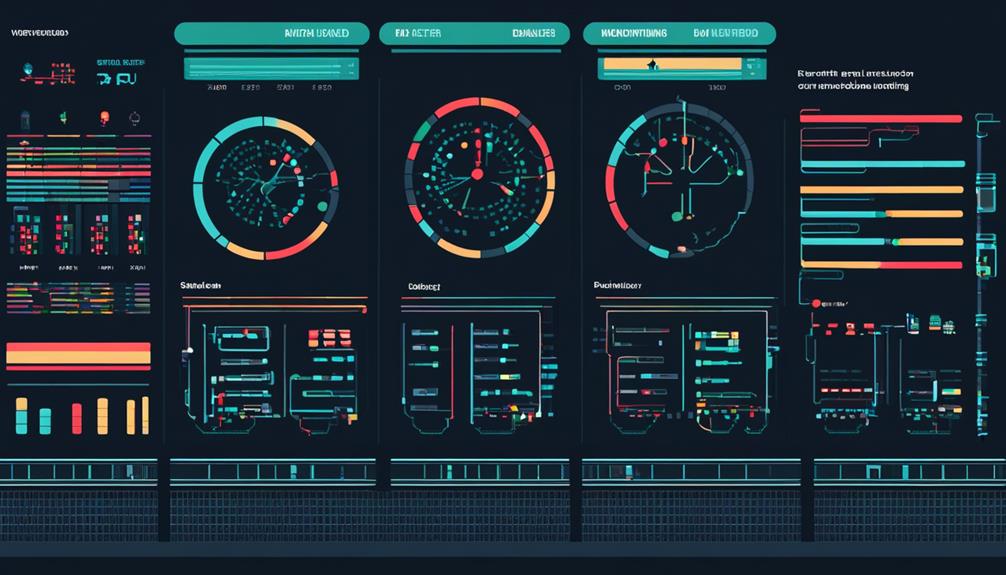
Network infrastructure monitoring is essential for ensuring improved service and reduced downtime in today's fast-paced and interconnected digital landscape. With the increasing complexity of network infrastructures and the critical role they play in delivering services, it is crucial to have robust monitoring tools in place.
Here are three reasons why network infrastructure monitoring is vital for organizations:
- Proactive Issue Detection: Network infrastructure monitoring tools help in monitoring the health and performance of network switches, routers, and security devices. By continuously monitoring these components, organizations can detect potential issues before they impact the network's performance or cause service disruptions. This proactive approach allows for timely troubleshooting and resolution, minimizing downtime and ensuring uninterrupted service delivery.
- Real-Time Alerting: These tools provide real-time monitoring and alerts for switches and routers. They can also monitor physical and virtual servers using SNMP/WMI/CLI protocols. With real-time monitoring and alerting capabilities, organizations can quickly identify and respond to any anomalies or performance bottlenecks. This enables them to take immediate action, preventing service degradation and minimizing the risk of downtime.
- Performance Optimization: Network infrastructure monitoring tools offer comprehensive dashboards for monitoring and visualizing the data center infrastructure, including racks and 3D views. This allows organizations to gain insights into the overall performance of their data center and identify areas for optimization. By analyzing the data center infrastructure and making informed decisions based on the insights provided, organizations can enhance service delivery, improve network performance, and reduce downtime.
Exploring the Features and Benefits of PRTG as a Data Center Monitoring Tool
In the realm of network infrastructure monitoring, one tool that stands out for its comprehensive features and benefits is PRTG, a data center monitoring tool. PRTG offers real-time threshold-based monitoring, allowing users to set performance thresholds and receive alerts when those thresholds are exceeded. This ensures that any potential issues or bottlenecks in the data center infrastructure are promptly identified and addressed.
One of the key features of PRTG is its ability to monitor both physical and virtual servers using SNMP, WMI, and CLI protocols. This enables administrators to have a holistic view of the entire data center environment, regardless of the type of server being used. The tool also provides comprehensive dashboards and customizable monitors for hardware metrics, allowing users to monitor critical parameters such as CPU usage, memory utilization, and disk space.
Furthermore, PRTG offers detailed reports that provide insights into the overall performance of the data center. These reports can be used to identify trends, analyze historical data, and make informed decisions about capacity planning and resource allocation.
In addition to its core features, PRTG also offers a range of add-ons that enable monitoring of critical devices beyond the traditional infrastructure. This includes monitoring of power distribution units (PDUs), environmental sensors, and other network devices. By incorporating these add-ons, administrators can ensure that all aspects of the data center are monitored and any potential vulnerabilities are proactively addressed.
Frequently Asked Questions
What Is Data Center Monitoring System?
A data center monitoring system is a comprehensive solution that ensures the smooth functioning and security of a data center environment. It provides real-time monitoring of network switches, routers, and security devices, allowing for proactive identification of potential issues.
The benefits of data center monitoring include improved performance, enhanced security, and increased operational efficiency. By monitoring the performance of various components in real-time, administrators can identify bottlenecks and optimize resource allocation. This leads to better overall performance and ensures that the data center can handle increasing workloads.
Enhanced security is another crucial benefit of data center monitoring. By monitoring network traffic and security devices, administrators can detect and respond to potential security threats in real-time. This helps in preventing data breaches and minimizing downtime.
Increased operational efficiency is also a significant advantage of data center monitoring. By having a holistic view of the data center environment, administrators can identify areas of inefficiency and make necessary improvements. This includes optimizing energy consumption, streamlining workflows, and automating routine tasks.
However, challenges in data center monitoring must be addressed. Scalability is one such challenge, as data centers are constantly growing in size and complexity. Monitoring solutions must be able to handle the increasing number of devices and data points without compromising performance.
Complexity is another challenge in data center monitoring. With the proliferation of different technologies and vendors, integrating and managing monitoring solutions can be complex. Administrators need to ensure that the monitoring system can work seamlessly with various devices and platforms.
Emerging trends in data center monitoring include the adoption of artificial intelligence and machine learning for predictive analytics and automation. By analyzing historical data and patterns, AI-powered monitoring systems can predict potential issues and automate remediation processes. This allows for proactive maintenance and reduces downtime.
What Is the Best Tool for Monitoring?
When looking for the best monitoring software, it is essential to consider top network monitoring tools that offer comprehensive features for effective data center monitoring. These tools provide numerous benefits, such as real-time monitoring, alerting, and customizable dashboards.
Key features to look for include the ability to monitor physical and virtual servers using various protocols, set performance thresholds, and generate detailed reports.
What Is the Tool Used for Server Monitoring?
Server monitoring is an essential aspect of ensuring the smooth operation and performance of a data center. It involves tracking the health, availability, and performance of servers to identify and resolve any issues promptly.
Various tools are available for server monitoring, including OpManager, which provides real-time monitoring and alerts for switches, routers, physical and virtual servers. OpManager supports SNMP, WMI, and CLI protocols, enabling comprehensive monitoring of network, application, and cloud environments.
Its customizable dashboards and detailed reports offer valuable insights into server performance.
What Is the Commonly Used MonIToring Tool to MonITor IT Infrastructure?
ManageEngine OpManager Plus is a commonly used monitoring tool for IT infrastructure. It offers comprehensive monitoring capabilities for data center performance, network monitoring, and capacity planning.
With real-time alerts and customizable monitors, OpManager provides organizations with the ability to effectively monitor their IT infrastructure. This tool ensures that businesses can proactively identify and address any issues, ensuring optimal performance and minimizing downtime.
OpManager's industry recognition and detailed reports make it a valuable option for organizations of various sizes and industries.
